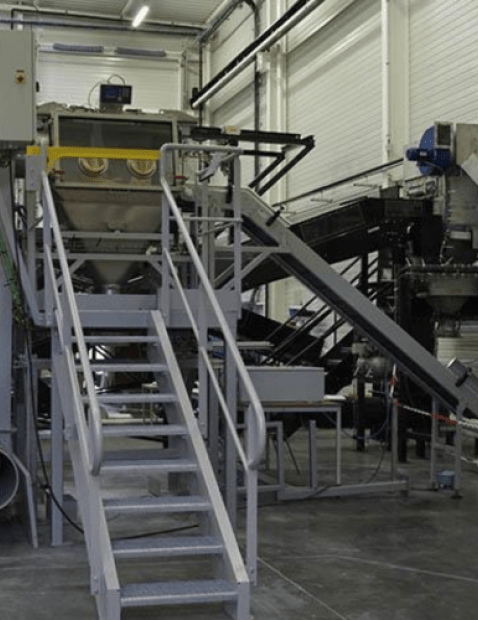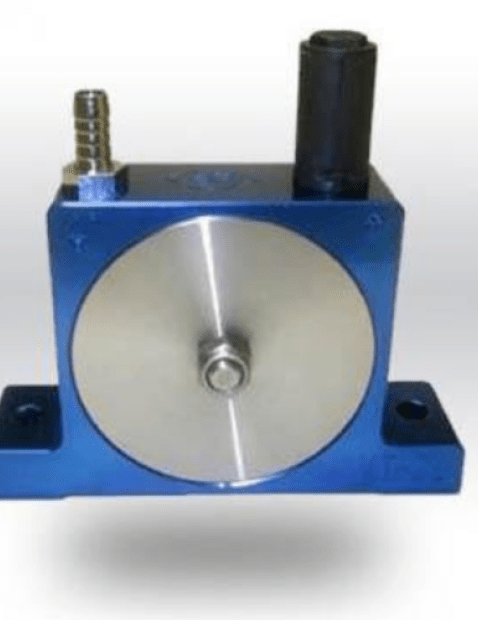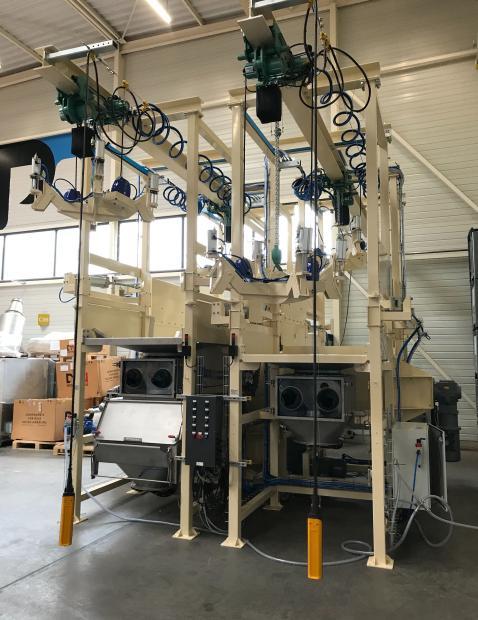
1. What type of load needs to be handled?
To set up a bag handling assistance system you first must define all the loads to be lifted, such as: drum handler, cardboard box handler, bag handler, etc. A comprehensive inventory of your containers needing to be handled must be taken into account.
What is the weight of the container - 10, 25, 50 or 80 kg? What is the maximum weight to take into account when handling your bags, drums or boxes? An 80 kg load manipulator will be able to lift a 25 kg bags as well, but it will be heavier in design and cost more to purchase.
Defining your needs as accurately as possible ensures the best investment / productivity ratio.
2. What handling height?
Depalletizing a bag from a 1,400mm or 2,200mm high pallet will not be done with the same manipulator design. If your production uses pallets of bags stacked over 2 meters, your manipulator must have an extended stroke and an articulated handle allowing the operator to maintain correct working ergonomics.
The articulated handles allow the suction boot to be raised above 2 meters and keep the control cylinder at a suitable height. The laying height of the bag, box or drum needs also to be defined.
This stroke for your application implies the length of the lifting tube needed and also the height of the attachment point of your manipulator. The standard strokes for Palamatic vacuum lifting tubes are 1,600 and 2,200 mm.

Are you looking for a handling system for your bags, drums or cartons?
I am here to help you in your study.
Tarik, bag handling expert
3. Overhead crane or jib crane?
Installing your bag handler on a jib crane allows for simple and economical installation but only covers a small work area. A jib crane for a lifting tube only allows an operator to work on 2/3 of the jib arm length and a radius of 270 °. Trying to handle a bag at the foot of the stem is difficult and requires a lot of effort to rotate the stem arm.
Working on an overhead crane provides a large and fully usable working surface, just like the handling jib. However, the overhead crane must not exceed 6 m in width in order to provide the handling operator with a lightweight mobile beam. This solution offers a minimum of inertia in the transitional movements.
The length of the overhead crane is adaptable. For large overhead cranes (generally used for picking / bag pallet preparation areas), a sliding "track" must be provided for the vacuum tube that connects to the gripping boot.
4. Which type of suction boot?
The vacuum used to "grip and lift" the load is maintained via a specific suction foot. The surface of the suction cup must be proportional to the load. Likewise, the shape and material of the suction foot must be in accordance with the load.
Lifting a bag requires a suction foot capable of adapting to the roughness of the bag and the "soft" side of the bag of powder.
Palamatic Process has designed a specific bag suction foot for handling all types of bags, including micro-perforated bags. This double-lip, vertical band suction cup is also capable of lifting cartons and drums.
For 100% cardboard or drum applications, simple gripping suction feet exist. In versatile handling applications, Palamatic Process offers the possibility of a quick change of the gripping head. A clip system allows the operator to change his suction cup in less than 1 minute and thus lift any type of load.



















